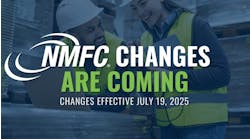In the trucking industry, the economy is the number one concern—at least according to the American Transportation Research Institute. Each year, ATRI releases its Critical Issues in the Trucking Industry report, and this year, the economy ranked as the top concern.
The report cites data from the Bureau of Labor Statistics that “high inflation drove up costs for consumers and producers alike, yet rising interest rates raised both borrowing rates and the cost of capital.” The situation was further exacerbated by declining prices across all sectors of the trucking industry and rising fuel costs.
Given all these factors, it is no wonder the economy rose four spots from last year’s survey to become the number one concern.
See also: Economic concerns top trucking industry’s worries going into 2024
While fleets can’t do much to change economic conditions, they can take steps to improve their operations to reduce costs and operate more efficiently to offset rising inflation, higher interest rates, and increased fuel prices.
Performing a fleet analysis is the first step to improving operational efficiency so fleet managers can identify what drives the fleet’s costs. They need to determine whether they have the right assets in place to meet the needs of their customers. Fleet managers need to optimize their assets to have the right combination of trucks, tractors, and trailers to meet demand.
They need to evaluate the fuel efficiency of each asset as well as what they are spending on maintenance and repairs to keep each asset on the road. Unless fleet managers know what each asset in the fleet is costing, they won’t be able to manage the fleet to achieve the lowest total cost of ownership.
Furthermore, managers should evaluate their procurement process and spend categories to ensure they are taking advantage of rebates and discounts and to determine where to concentrate spend to gain a pricing advantage.
The best way for fleet managers to improve their operational efficiency and offset rising costs is to use data analytics to get a complete picture of what their actual operating costs are on a per-asset basis. Only then can they take the necessary steps to optimize their operation.
Patrick Gaskins, SVP of Corcentric Fleet Solutions, oversees both sales and operations for the company's fleet offerings. Gaskins joined the company in 2010, bringing more than 30 years of experience as a financial services professional in the transportation industry. He leads a team that works with a supply base of more than 160 manufacturers to help the country's largest fleets manage all aspects of their fleet operations and fleet-related spending.




